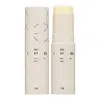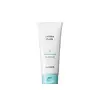What's inside
What's inside
 Key Ingredients
Key Ingredients

 Benefits
Benefits

 Concerns
Concerns

No concerns
 Ingredients Side-by-side
Ingredients Side-by-side

Helianthus Annuus Seed Oil
EmollientPolyglyceryl-2 Triisostearate
EmulsifyingButyrospermum Parkii Butter
Skin ConditioningOctyldodecanol
EmollientPolyethylene
AbrasiveEuphorbia Cerifera Cera
AstringentMicrocrystalline Wax
Emulsion StabilisingDiisostearyl Malate
EmollientPrunus Amygdalus Dulcis Oil
Skin ConditioningTocopheryl Acetate
AntioxidantRicinus Communis Seed Oil
MaskingMonascus Extract
Skin ConditioningRoyal Jelly Extract
Skin ConditioningHoney Extract
HumectantPropolis Extract
Skin ConditioningBetula Alba Bark Extract
MaskingVitex Agnus-Castus Fruit Oil
MaskingCamellia Sinensis Seed Oil
HumectantCamellia Seed Oil
Argania Spinosa Kernel Oil
EmollientOlea Europaea Fruit Oil
MaskingSimmondsia Chinensis Seed Oil
EmollientSoluble Collagen
HumectantBisabolol
MaskingTocopherol
AntioxidantWater
Skin ConditioningButylene Glycol
HumectantCeramide NP
Skin ConditioningHyaluronic Acid
Humectant1,2-Hexanediol
Skin ConditioningGlycerin
HumectantSnail Secretion Filtrate
Skin ConditioningCaprylyl Glycol
EmollientAcetyl Hexapeptide-8
HumectantCopper Tripeptide-1
Skin ConditioningTripeptide-1
Skin ConditioningPalmitoyl Pentapeptide-4
Skin ConditioningHexapeptide-9
Skin ConditioningParfum
MaskingDehydroacetic Acid
PreservativeHelianthus Annuus Seed Oil, Polyglyceryl-2 Triisostearate, Butyrospermum Parkii Butter, Octyldodecanol, Polyethylene, Euphorbia Cerifera Cera, Microcrystalline Wax, Diisostearyl Malate, Prunus Amygdalus Dulcis Oil, Tocopheryl Acetate, Ricinus Communis Seed Oil, Monascus Extract, Royal Jelly Extract, Honey Extract, Propolis Extract, Betula Alba Bark Extract, Vitex Agnus-Castus Fruit Oil, Camellia Sinensis Seed Oil, Camellia Seed Oil, Argania Spinosa Kernel Oil, Olea Europaea Fruit Oil, Simmondsia Chinensis Seed Oil, Soluble Collagen, Bisabolol, Tocopherol, Water, Butylene Glycol, Ceramide NP, Hyaluronic Acid, 1,2-Hexanediol, Glycerin, Snail Secretion Filtrate, Caprylyl Glycol, Acetyl Hexapeptide-8, Copper Tripeptide-1, Tripeptide-1, Palmitoyl Pentapeptide-4, Hexapeptide-9, Parfum, Dehydroacetic Acid
Water
Skin ConditioningGlycerin
HumectantButylene Glycol
HumectantHydrogenated Polydecene
Emollient1,2-Hexanediol
Skin ConditioningDiglycerin
HumectantPropanediol
SolventAnthemis Nobilis Flower Extract
MaskingPanthenol
Skin ConditioningFragaria Vesca Leaf Extract
AstringentEthylhexylglycerin
Skin ConditioningCentella Asiatica Extract
CleansingDisodium EDTA
Portulaca Oleracea Extract
Skin ConditioningPolygonum Cuspidatum Root Extract
AntioxidantScutellaria Baicalensis Root Extract
AstringentSodium Hyaluronate
HumectantHyaluronic Acid
HumectantHydrolyzed Hyaluronic Acid
HumectantGlycyrrhiza Glabra Root Extract
BleachingCamellia Sinensis Leaf Extract
AntimicrobialChamomilla Recutita Flower Extract
MaskingRosmarinus Officinalis Leaf Extract
AntimicrobialCalendula Officinalis Extract
Skin ConditioningMadecassoside
AntioxidantCetearyl Olivate
Sorbitan Olivate
EmulsifyingCarbomer
Emulsion StabilisingAmmonium Acryloyldimethyltaurate/Vp Copolymer
Tromethamine
BufferingWater, Glycerin, Butylene Glycol, Hydrogenated Polydecene, 1,2-Hexanediol, Diglycerin, Propanediol, Anthemis Nobilis Flower Extract, Panthenol, Fragaria Vesca Leaf Extract, Ethylhexylglycerin, Centella Asiatica Extract, Disodium EDTA, Portulaca Oleracea Extract, Polygonum Cuspidatum Root Extract, Scutellaria Baicalensis Root Extract, Sodium Hyaluronate, Hyaluronic Acid, Hydrolyzed Hyaluronic Acid, Glycyrrhiza Glabra Root Extract, Camellia Sinensis Leaf Extract, Chamomilla Recutita Flower Extract, Rosmarinus Officinalis Leaf Extract, Calendula Officinalis Extract, Madecassoside, Cetearyl Olivate, Sorbitan Olivate, Carbomer, Ammonium Acryloyldimethyltaurate/Vp Copolymer, Tromethamine
Ingredients Explained
These ingredients are found in both products.
Ingredients higher up in an ingredient list are typically present in a larger amount.
1,2-Hexanediol is a synthetic liquid and another multi-functional powerhouse.
It is a:
- Humectant, drawing moisture into the skin
- Emollient, helping to soften skin
- Solvent, dispersing and stabilizing formulas
- Preservative booster, enhancing the antimicrobial activity of other preservatives
Butylene Glycol (or BG) is used within cosmetic products for a few different reasons:
Overall, Butylene Glycol is a safe and well-rounded ingredient that works well with other ingredients.
Though this ingredient works well with most skin types, some people with sensitive skin may experience a reaction such as allergic rashes, closed comedones, or itchiness.
Learn more about Butylene GlycolGlycerin is already naturally found in your skin. It helps moisturize and protect your skin.
A study from 2016 found glycerin to be more effective as a humectant than AHAs and hyaluronic acid.
As a humectant, it helps the skin stay hydrated by pulling moisture to your skin. The low molecular weight of glycerin allows it to pull moisture into the deeper layers of your skin.
Hydrated skin improves your skin barrier; Your skin barrier helps protect against irritants and bacteria.
Glycerin has also been found to have antimicrobial and antiviral properties. Due to these properties, glycerin is often used in wound and burn treatments.
In cosmetics, glycerin is usually derived from plants such as soybean or palm. However, it can also be sourced from animals, such as tallow or animal fat.
This ingredient is organic, colorless, odorless, and non-toxic.
Glycerin is the name for this ingredient in American English. British English uses Glycerol/Glycerine.
Learn more about GlycerinHyaluronic acid is naturally found in healthy skin. It is a humectant, meaning it draws moisture to your skin.
This ingredient helps hydrate, soothe, and protect the skin.
What makes hyaluronic acid so hydrating? It has the capacity to bind or hold large amounts of water.
Fun fact: It is already naturally found in our bodies, such as the fluids of our eyes and our joints.
Studies find this ingredient to have anti-inflammatory and anti-microbial properties. This can help speed up wound-healing.
Hyaluronic acid can be irritating if the molecule has a low-molecular weight, or if the molecules are small.
One study found low-molecular weight hyaluronic acid to be pro-inflammatory, meaning some people may experience irritation. This is because our bodies use hyaluronic acid in the wound-healing process to signal to our bodies, via irritation, that something needs healing.
The same study found high-molecular weight hyaluronic acid to be anti-inflammatory.
These are some other common types of Hyaluronic Acid:
Learn more about Hyaluronic AcidWater. It's the most common cosmetic ingredient of all. You'll usually see it at the top of ingredient lists, meaning that it makes up the largest part of the product.
So why is it so popular? Water most often acts as a solvent - this means that it helps dissolve other ingredients into the formulation.
You'll also recognize water as that liquid we all need to stay alive. If you see this, drink a glass of water. Stay hydrated!
Learn more about Water